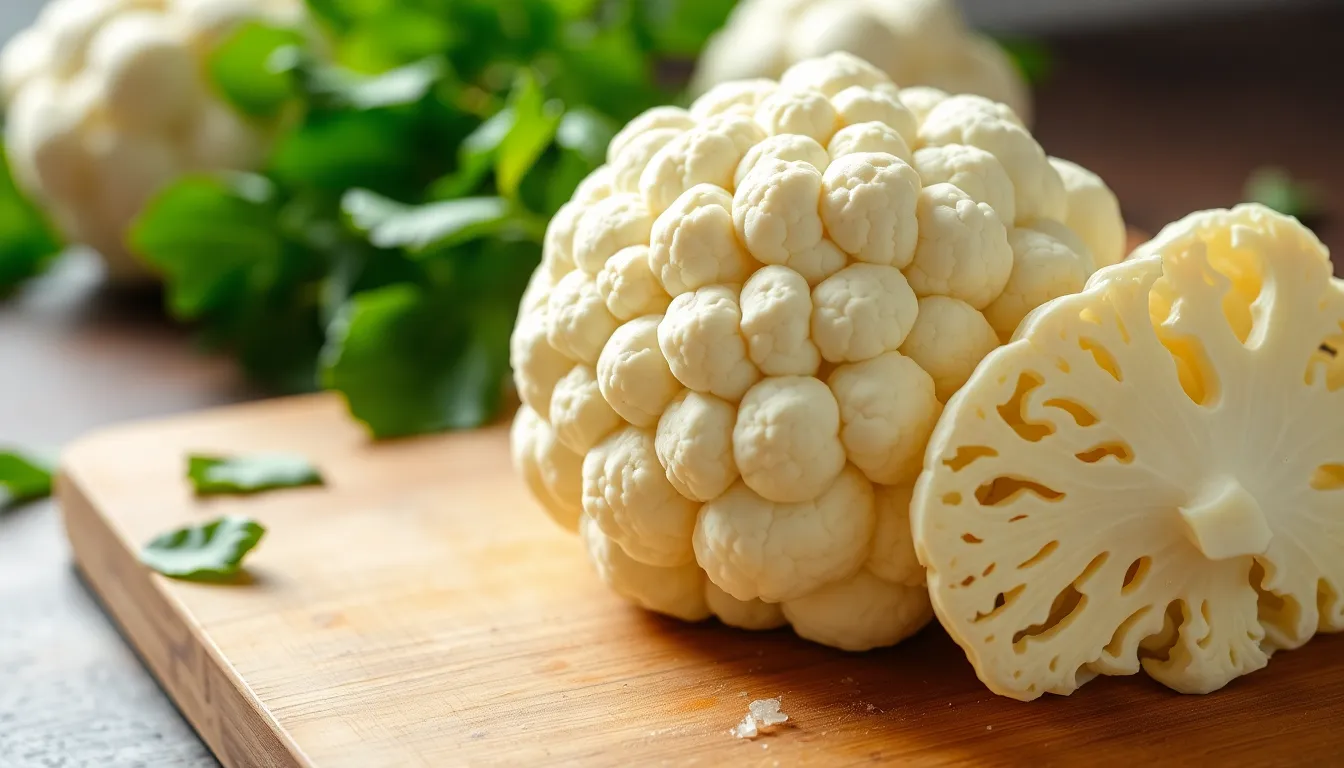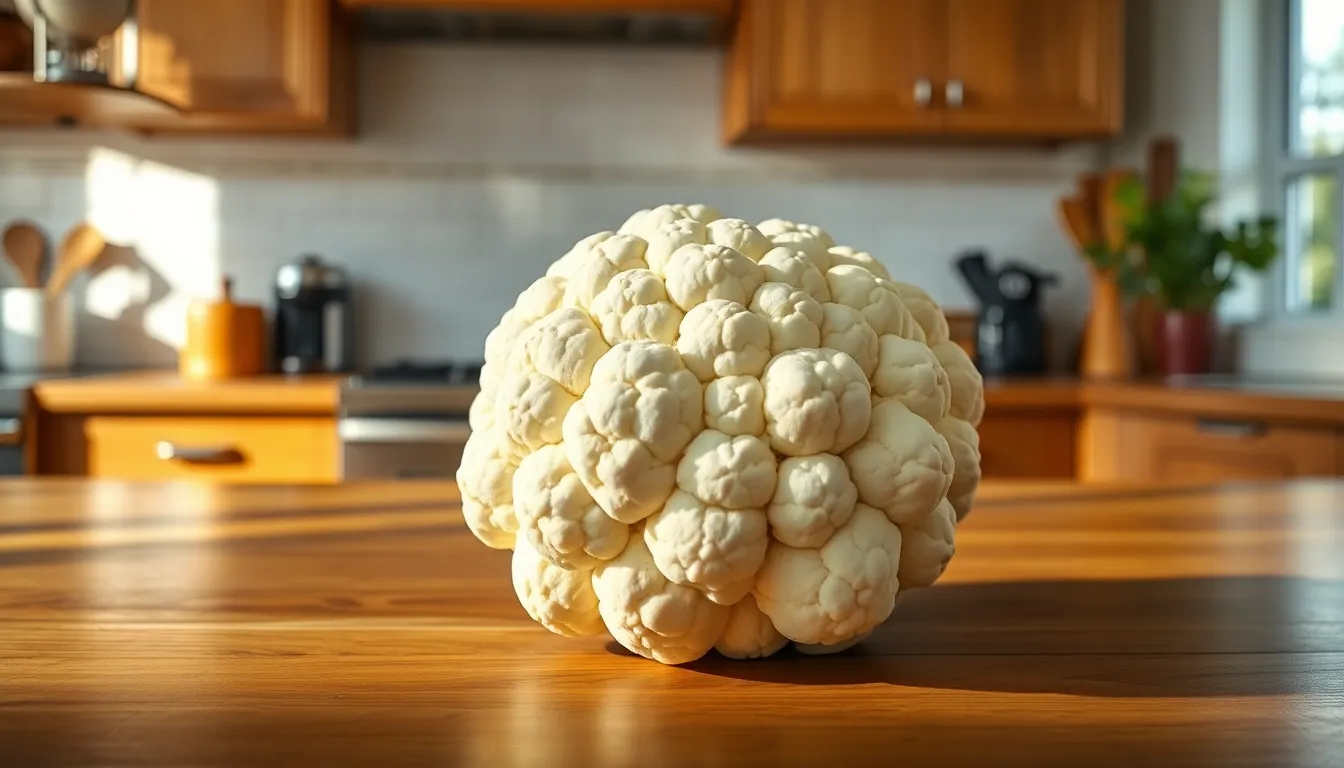Cauliflower is a versatile vegetable that can elevate countless dishes, but knowing when it’s gone bad can be tricky. With its delicate texture and unique flavor, it’s essential to recognize the signs of spoilage to avoid wasting food and money.
Whether it’s fresh from the market or lingering in the fridge, understanding how to assess cauliflower’s quality can make all the difference. From discoloration to unpleasant odors, several indicators signal that it’s time to toss that head of cauliflower. This guide will help anyone identify the telltale signs of bad cauliflower, ensuring meals remain delicious and safe.
Table of Contents
ToggleSigns of Bad Cauliflower
Recognizing signs of spoilage in cauliflower is essential for food safety and quality. Key indicators include visual cues and texture changes.
Visual Cues
Visual signs of bad cauliflower usually appear first. Check for the following:
- Discoloration: Look for yellow or brown spots on the florets, which indicate spoilage.
- Mold Growth: Observe the surface for any fuzzy or slimy patches, signaling potential mold.
- Softness: If the florets become mushy or have a slimy sheen, discard them.
Texture Indicators
- Firmness: Fresh cauliflower feels firm when squeezed. Softness suggests it’s past its prime.
- Wetness: Excess moisture on the surface indicates potential spoilage.
- Overall Structure: If the florets start to fall apart or appear wilted, it’s time to dispose of the vegetable.
Smell and Taste Assessment


Assessing the smell and taste of cauliflower plays a crucial role in determining its freshness. Recognizing off-putting odors and flavor changes helps ensure safety in meals and enhances culinary enjoyment.
Off-Putting Odors
Cauliflower should emit a fresh, mild, and slightly earthy scent. If it presents a sour, rancid, or overly pungent odor, spoilage likely occurred. Any strong or unusual smells signal a need for caution, as they indicate bacterial activity and potential spoilage. Affected cauliflower should not be consumed.
Flavor Changes
Fresh cauliflower offers a mild, slightly sweet flavor. A bitter or off-tasting sensation indicates deterioration. If the taste veers from its typical profile, the cauliflower may no longer be safe for consumption. Distinguishing these flavor changes is essential for maintaining quality in dishes.
Proper Storage Techniques
Effective storage extends the lifespan of cauliflower and maintains its quality. Implementing proper techniques ensures freshness and prevents spoilage.
Keeping Cauliflower Fresh
Store cauliflower in the refrigerator to preserve freshness. Place it in a perforated plastic bag to allow airflow while maintaining moisture. Keep it in the vegetable crisper drawer, where humidity levels are optimal. Avoid washing cauliflower before storage, as excess moisture promotes mold growth. For best results, consume within five to seven days for peak quality.
Best Ways to Store Leftovers
To store leftover cauliflower dishes, use airtight containers to minimize air exposure. Label the containers with dates to track freshness. Refrigerate leftovers promptly, ideally within two hours of cooking, to prevent bacterial growth. Consumption within three to four days is recommended for optimum taste and safety. Freezing cooked cauliflower extends its shelf life; it can last for up to twelve months in the freezer when appropriately packaged.
Health Risks of Consuming Bad Cauliflower
Consuming bad cauliflower poses significant health risks that can lead to foodborne illnesses. Harmful bacteria, like E. coli and Salmonella, thrive on spoiled vegetables, leading to gastrointestinal distress. Symptoms of foodborne illnesses include nausea, vomiting, diarrhea, and abdominal cramps.
Infectious pathogens can grow on cauliflower exhibiting spoilage signs such as mold or decay. Mold may produce mycotoxins, which can be harmful when ingested. These toxins lead to poisoning symptoms, ranging from allergic reactions to liver damage, depending on the individual’s health and the type of mold.
Texture deterioration impacts food safety as well. Soft or mushy florets may indicate microbial growth, increasing the risk of contamination. Even seemingly minor spoilage signs, such as an off smell or bitter taste, suggest that the cauliflower is no longer safe to consume. It’s essential to discard any cauliflower that appears questionable to avoid these health risks and ensure safe eating habits.



